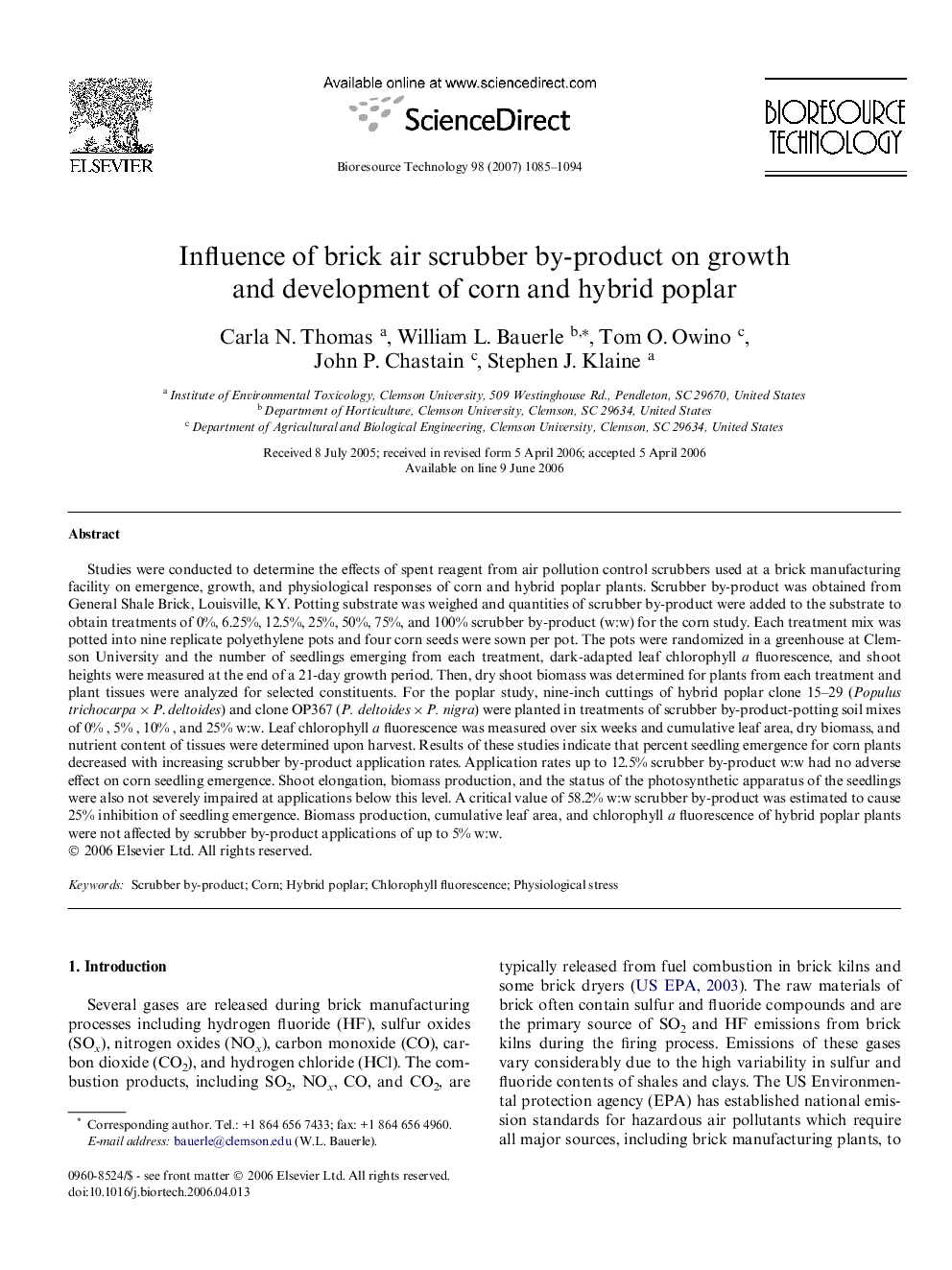| Article ID | Journal | Published Year | Pages | File Type |
|---|---|---|---|---|
| 686594 | Bioresource Technology | 2007 | 10 Pages |
Studies were conducted to determine the effects of spent reagent from air pollution control scrubbers used at a brick manufacturing facility on emergence, growth, and physiological responses of corn and hybrid poplar plants. Scrubber by-product was obtained from General Shale Brick, Louisville, KY. Potting substrate was weighed and quantities of scrubber by-product were added to the substrate to obtain treatments of 0%, 6.25%, 12.5%, 25%, 50%, 75%, and 100% scrubber by-product (w:w) for the corn study. Each treatment mix was potted into nine replicate polyethylene pots and four corn seeds were sown per pot. The pots were randomized in a greenhouse at Clemson University and the number of seedlings emerging from each treatment, dark-adapted leaf chlorophyll a fluorescence, and shoot heights were measured at the end of a 21-day growth period. Then, dry shoot biomass was determined for plants from each treatment and plant tissues were analyzed for selected constituents. For the poplar study, nine-inch cuttings of hybrid poplar clone 15–29 (Populus trichocarpa × P. deltoides) and clone OP367 (P. deltoides × P. nigra) were planted in treatments of scrubber by-product-potting soil mixes of 0% , 5% , 10% , and 25% w:w. Leaf chlorophyll a fluorescence was measured over six weeks and cumulative leaf area, dry biomass, and nutrient content of tissues were determined upon harvest. Results of these studies indicate that percent seedling emergence for corn plants decreased with increasing scrubber by-product application rates. Application rates up to 12.5% scrubber by-product w:w had no adverse effect on corn seedling emergence. Shoot elongation, biomass production, and the status of the photosynthetic apparatus of the seedlings were also not severely impaired at applications below this level. A critical value of 58.2% w:w scrubber by-product was estimated to cause 25% inhibition of seedling emergence. Biomass production, cumulative leaf area, and chlorophyll a fluorescence of hybrid poplar plants were not affected by scrubber by-product applications of up to 5% w:w.
